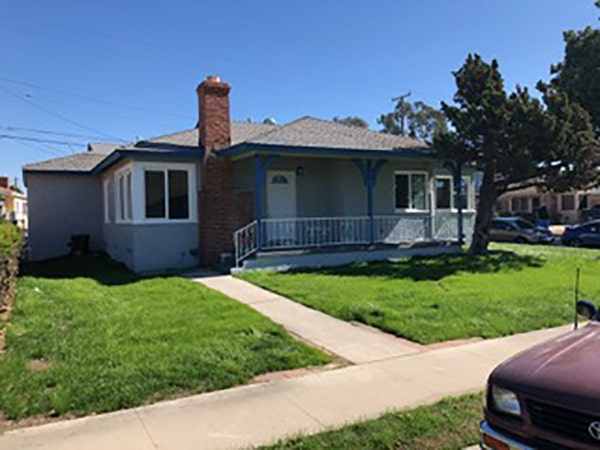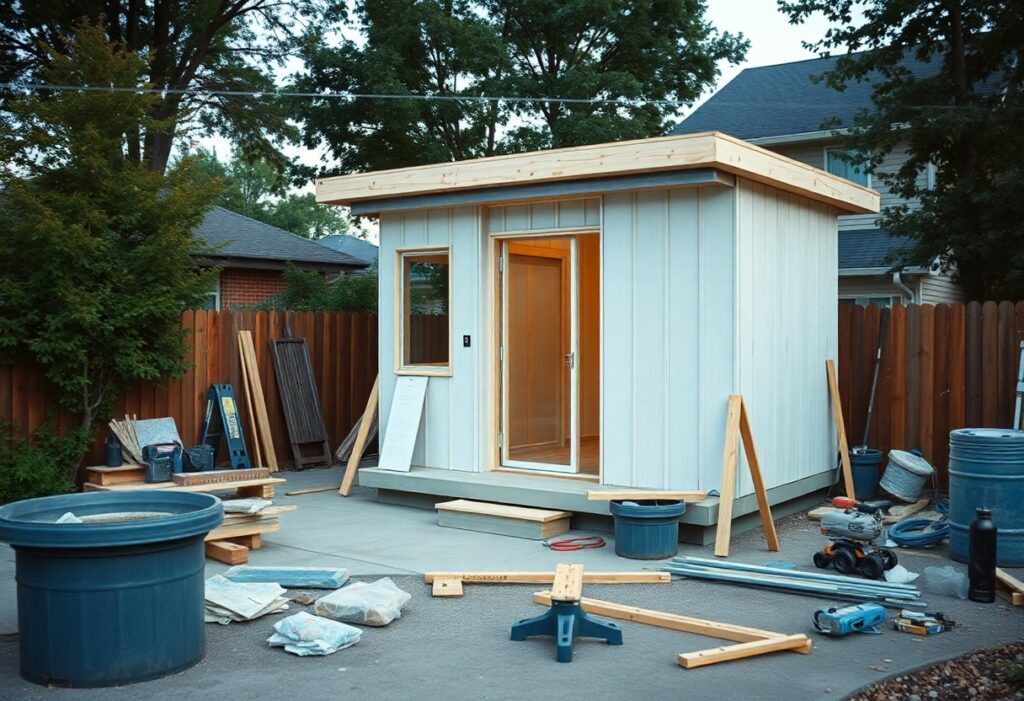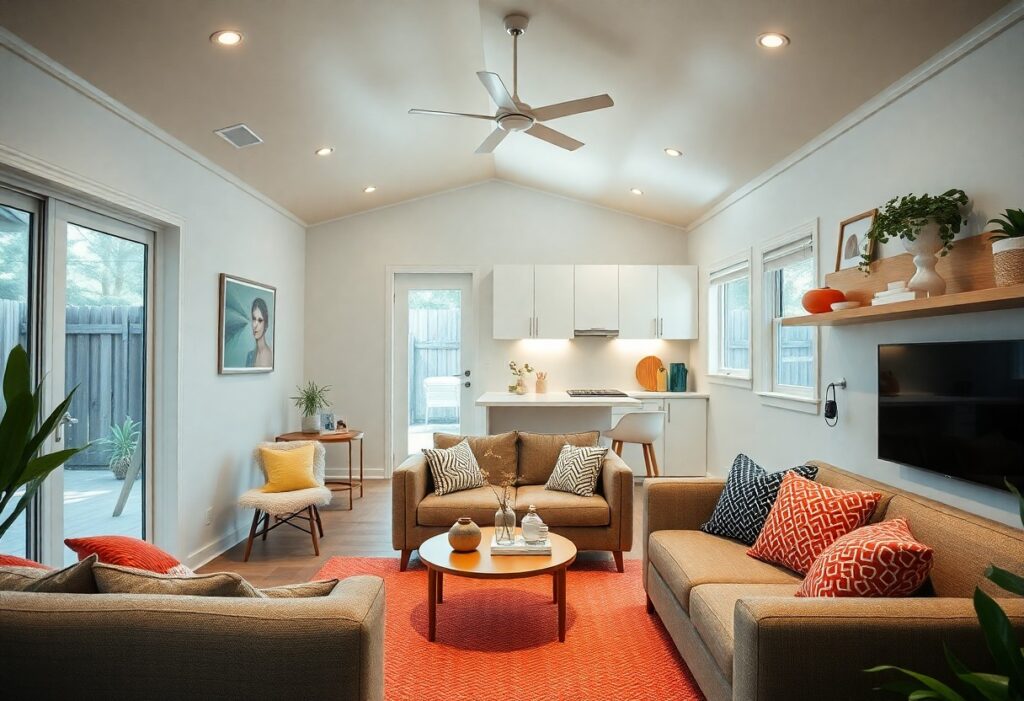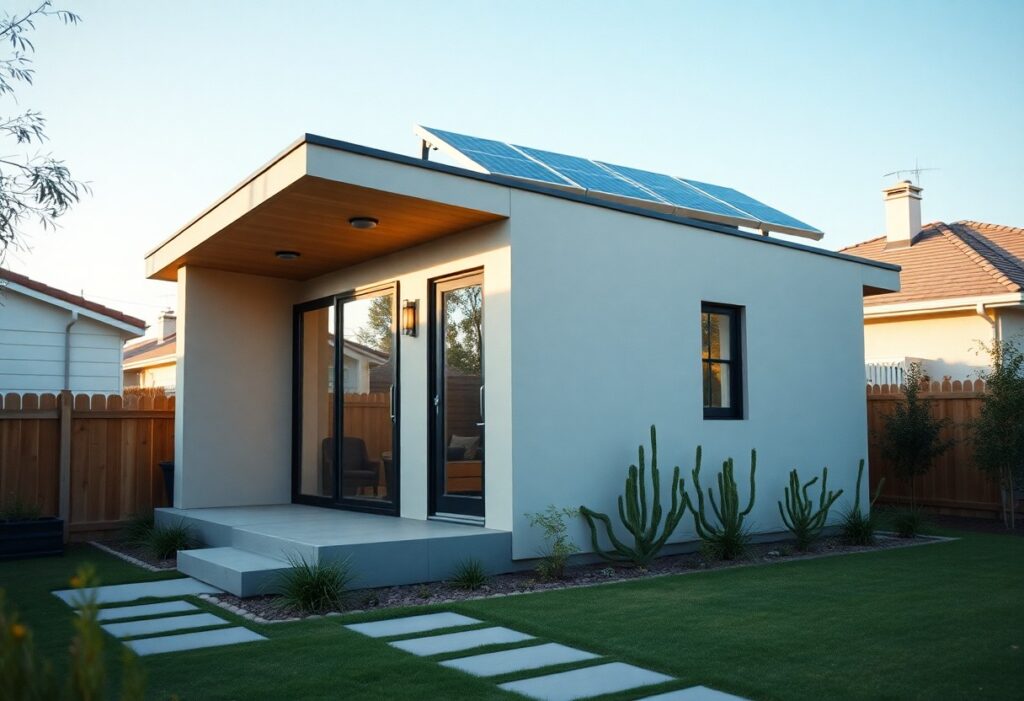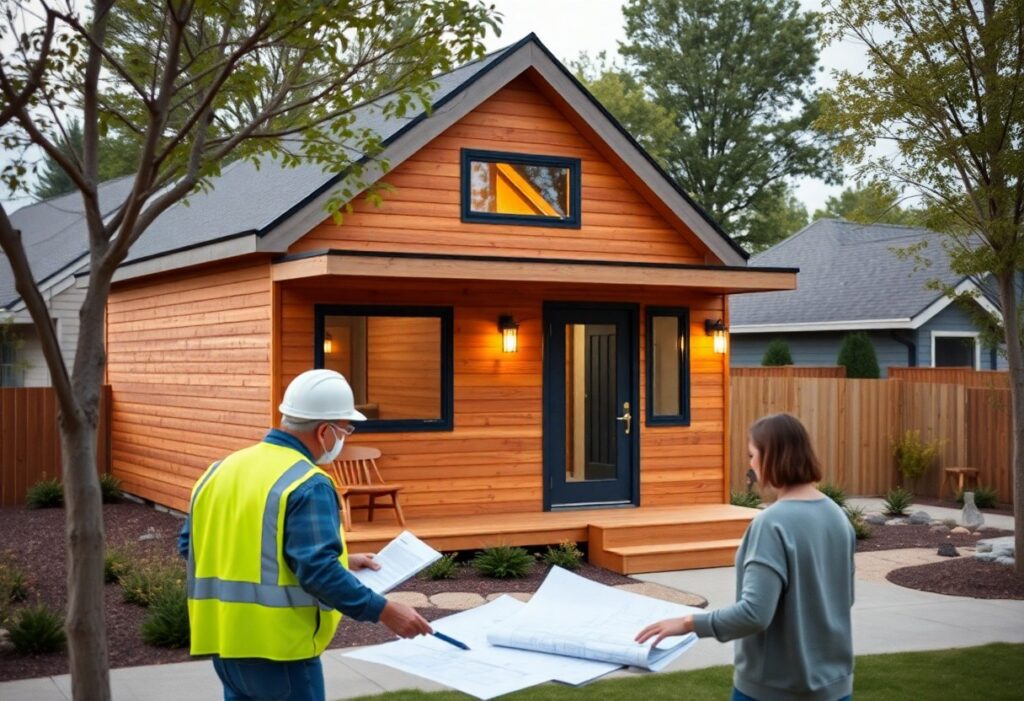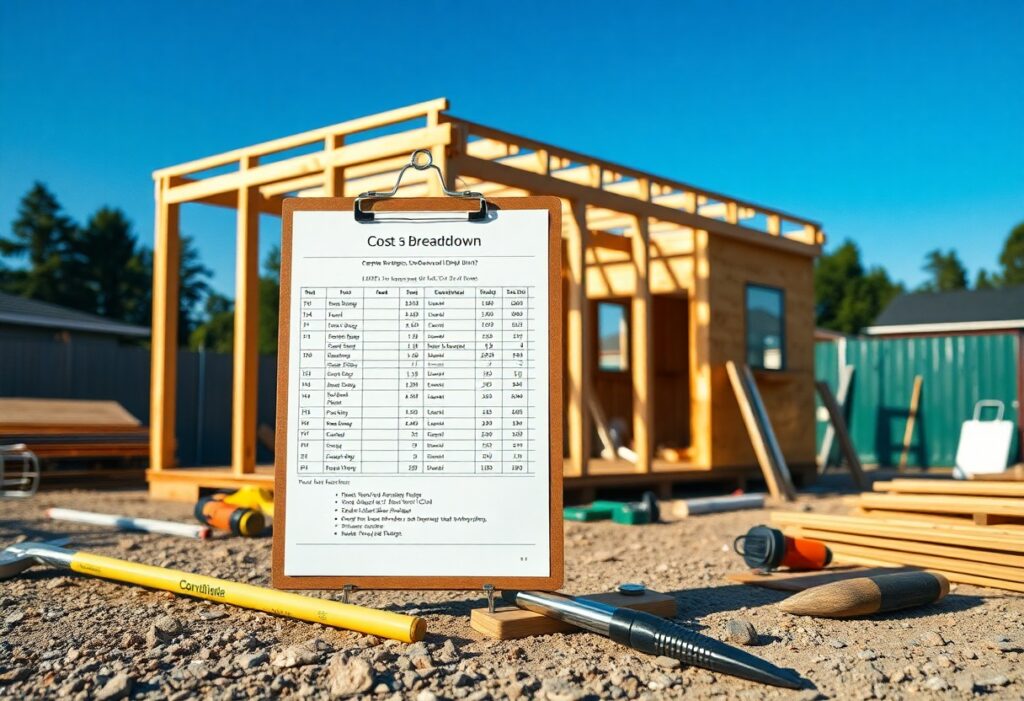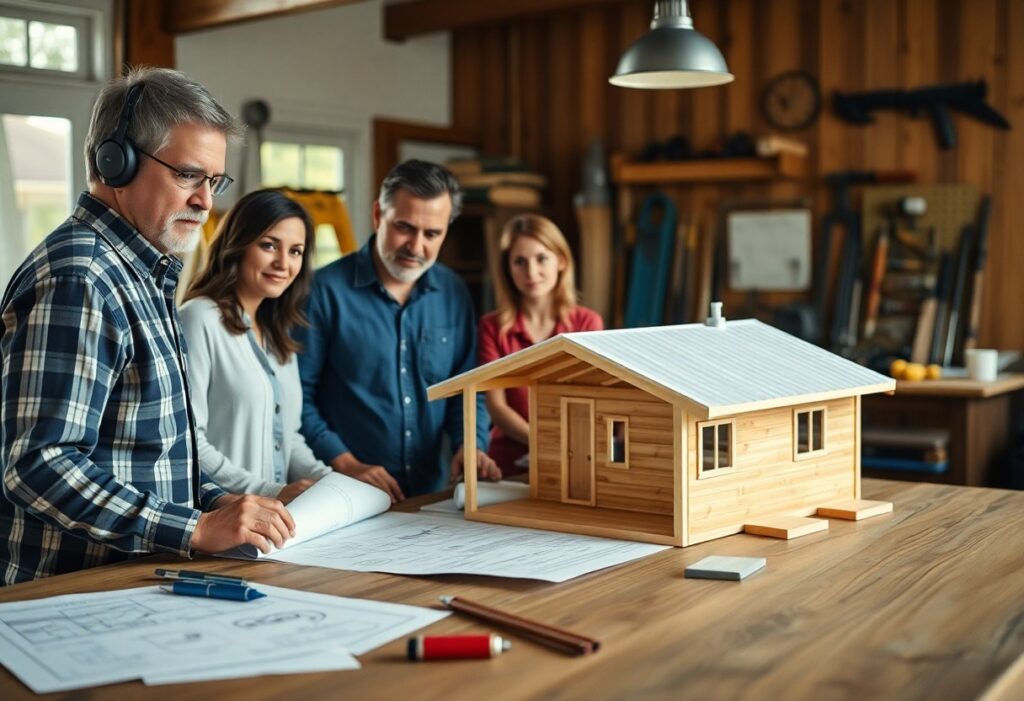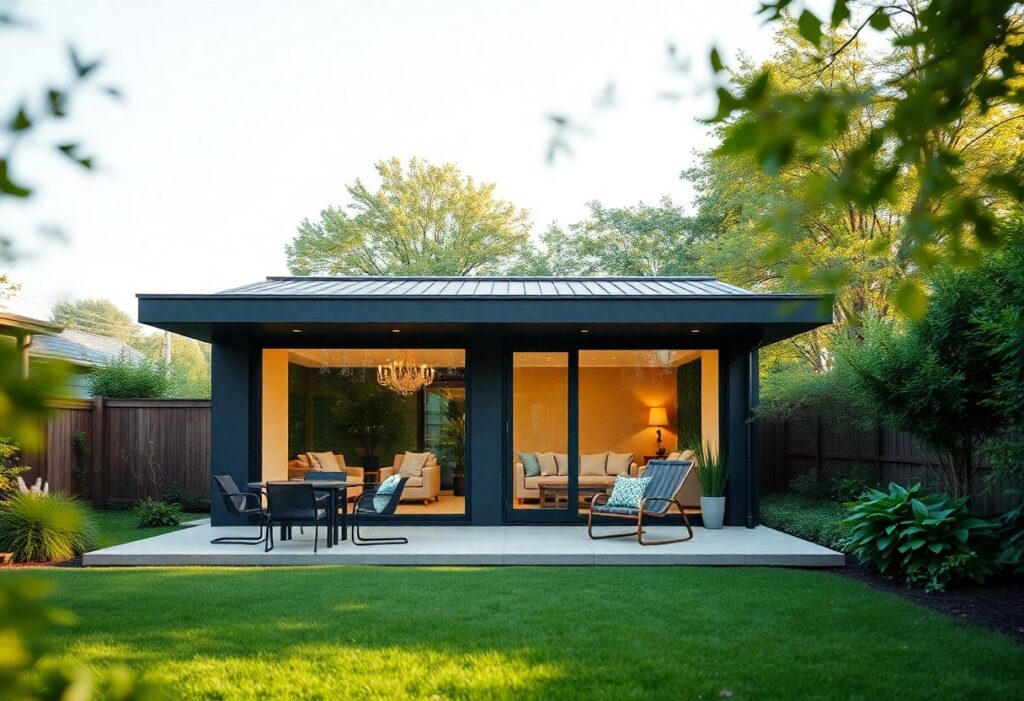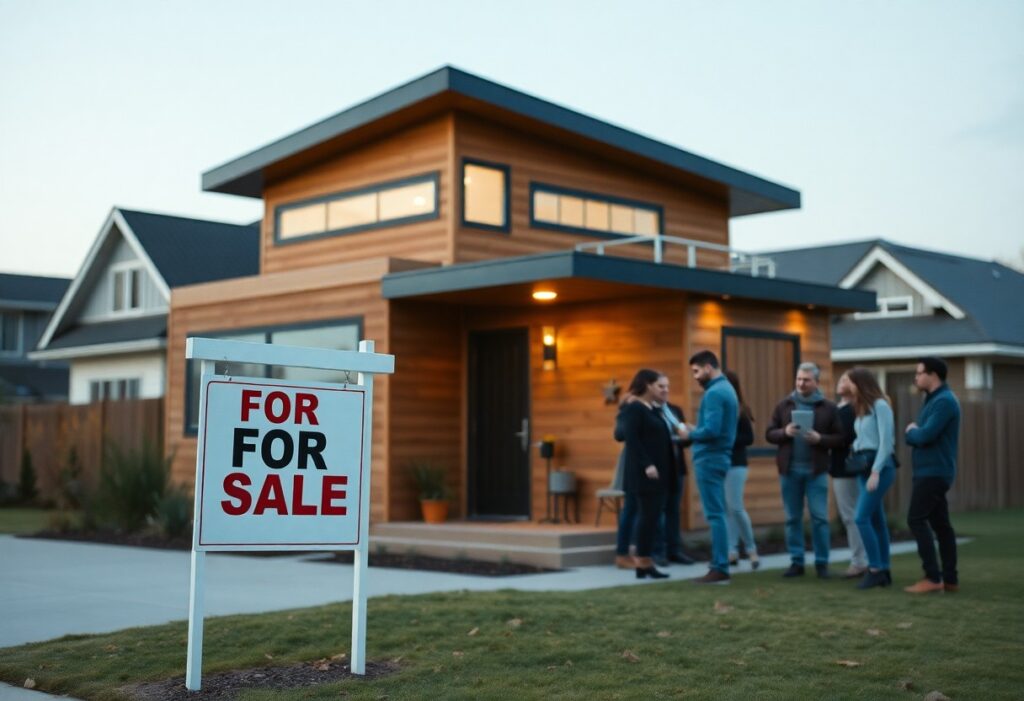How Much Does it Cost to Build an ADU?
It’s important for homeowners considering an ADU to have a clear idea of the costs involved in building it. These costs can range from $150 to $600 a square foot, depending on various factors. Such individual units offer multiple uses, including:
- Adding to property value
- Producing a large investment return through potential rental income
What is an Accessory Dwelling Unit (ADU)?
An Accessory Dwelling Unit, often referred to as a Prefab ADU in California, is a separate living space built on the same property as a primary residence. These units are typically constructed in backyards and serve as versatile additions to your home. In places like Chino Hills, ADUs can be a strategic solution for expanding living space.
Uses of ADUs
ADUs are not just about adding square footage; they offer practical benefits such as:
- Providing extra space for family members, like returning children or aging parents, ensuring they have a comfortable and independent living area.
- Serving as rental properties, which can be a lucrative source of income.
The Range and Cost-Effectiveness of ADUs
Accessory dwelling units are not only useful but also flexible, allowing for:
- A large living room, including a kitchen and bathroom
- Multiple bedrooms
These granny flats can prove an invaluable asset that homeowners can use as a short or long-term rental, such as Airbnb, to increase their availability and profitability.
By understanding both the costs and the versatile uses of ADUs, homeowners can make informed decisions that enhance their property’s value and functionality.
Key Cost Factors
The cost of building an ADU varies based on:
- Design and size of the structure
- Needed utilities and furnishings
In this post, I will explain the total per-square-foot cost of building an ADU in detail and lay out the key costs and driving factors. You need these facts to make the best decisions on your ADU project.
Why Are People Opting to Build ADUs in Southern California?
Accessory Dwelling Units (ADUs) are becoming increasingly popular in Southern California for several compelling reasons. Let’s dive into what’s driving this trend:
- Addressing Housing Shortages
The region’s housing crisis has led to a significant shortage of rental properties, driving up monthly rent prices. For instance, a recent listing on Zillow showcased a 1,200 square-foot, three-bedroom, two-bath ADU in Carlsbad renting for $3,900 per month. This scenario makes building an ADU an enticing option for homeowners seeking to generate rental income. - Cost-Effective Construction
Building an ADU using prefab construction methods can be significantly more economical, costing over 30% less than traditional on-site builds. This cost efficiency allows homeowners to invest in ADUs without breaking the bank. - Financial Support Through Grants
The California Housing Finance Agency (CalHFA) offers an ADU grant program, providing eligible homeowners with up to $40,000. This grant eases the financial burden and encourages more people to consider prefab ADUs as a viable option. - Expedited Construction Timeline
Prefabricated ADUs offer a quicker construction timeline, as the plans are pre-approved by the State of California. This streamlined process allows homeowners to have a completed ADU in a fraction of the time it would take for traditional construction. - Minimized Disruption
Construction of prefab ADUs is primarily done in a factory, which means there is less disturbance to the main residence and neighboring properties. This method is not only efficient but also considerate of the surrounding community.
By addressing the pressing need for affordable housing and offering financial and practical benefits, ADUs are an attractive solution for homeowners in Southern California.
Renting Your ADU with Innovative Finance Solutions
RenoFi offers a new way to finance your ADU. These condos can:
- Make your property more valuable once renovated
- Provide a steady rental income
Although expensive initially, you could use the equity in your home to build it.
The Impact of California‘s Housing Shortage on Rental Prices
California‘s persistent housing shortage has significantly impacted rental prices across the state, driving them to startling heights. With the demand for homes surpassing the supply, many prospective homeowners have turned to renting, intensifying competition for available rental properties.
One striking example is a modest 1,200 square foot, three-bedroom, two-bath Accessory Dwelling Unit (ADU) in Carlsbad, California. Currently listed at $3,900 per month, this rental epitomizes the steep costs faced by renters in the region. Such high rental prices are becoming increasingly common in areas with limited housing options.
Key Factors Contributing to Rising Rents
- Increased Demand: As buying a home becomes more challenging, many individuals and families opt to rent, swelling the pool of potential tenants.
- Limited Supply: With fewer new constructions and ongoing regulatory hurdles, the availability of rental units is not keeping pace with demand.
- Urbanization: The lure of city amenities and opportunities draws more people to urban areas, exacerbating the scarcity of rental housing.
Broader Implications
These soaring rents are not just numbers—they impact everyday lives. Many residents find themselves forced to stretch budgets thinly, compromise on space, or even relocate to less costly areas, further reshaping demographic and economic landscapes across California.
How the CalHFA ADU Grant Program Assists in Funding Your Prefab ADU
The CalHFA ADU Grant program offers a new opportunity for California homeowners to ease financial burdens when building a prefab Accessory Dwelling Unit (ADU). By providing up to $40,000 in grant funding, this initiative significantly reduces the out-of-pocket expenses associated with ADU construction.
Key Benefits of the CalHFA ADU Grant:
- Financial Support: The grant covers various costs associated with building a prefab ADU, making it more affordable for homeowners.
- Accessibility: Homeowners who might have struggled to finance an ADU now have a better chance to proceed with their plans, thanks to this substantial financial aid.
- Simplified Process: The program aims to streamline the funding process, allowing homeowners to focus on construction rather than complex financing.
For those considering adding a prefab ADU, this grant program can be a game changer by lowering the financial barriers and making the dream of expanding living space a reality.
Looking to find out more about qualifying for a $40,000 California ADU grant? A great starting point is to connect with experts specializing in prefab construction within California. These professionals can provide detailed insights on both prefab building processes and grant eligibility criteria. Additionally, exploring resources on state government websites and housing authority portals can offer valuable information on the grant application process. Don’t miss out on informative workshops or local seminars about ADU grants, as they often provide step-by-step guidance. Taking the time to research these avenues will help you navigate the specifics of qualifying for this significant financial aid.
Example of Financing
Let’s say you own a house worth $500,000 with a mortgage of $400,000. An ADU could increase the value of the home to $640,000. If you have an existing loan-to-value ratio of 80 percent, conventional home equity loans might not be available due to their loan limits. However, RenoFi’s financing allows you to:
- Take out 150% of the appraised value of your home
- Borrow 90% of the sale price, whichever is less
For instance, while a traditional home equity loan may not offer much more borrowing power, a RenoFi loan might allow you to borrow up to $176,000 depending on your home’s expected higher value.
How to Deal with the Costs and Tangled Seams of Building an ADU
The process of creating an ADU is a big investment that requires significant money and expertise. ADUs typically cost $150 to $600 per square foot, depending on:
- Location
- Lot size
- Zoning
- Style
Understanding California’s Regulations on ADU Sizes
California state law provides specific guidelines for the size of Accessory Dwelling Units (ADUs), ensuring flexibility while maintaining uniformity across various municipalities. Typically, state legislation permits ADUs to be up to 1,200 square feet in size. This standard size is applicable in most cities, although some local adjustments might occur depending on municipal zoning laws and regulations.
Key Points to Consider:
- Maximum Size: The general cap for an ADU in California is set at 1,200 square feet, providing ample space for homeowners to design comfortable and functional living units.
- Local Variations: While the state sets a maximum limit, individual cities might impose additional restrictions or requirements based on local zoning ordinances. It’s essential for homeowners to check with their city’s planning department to understand any specific rules that apply.
- Flexibility for Homeowners: These regulations aim to offer property owners the opportunity to create varied living spaces, whether for additional income, housing family members, or increasing property value.
This streamlined approach by the state government strives to facilitate housing solutions by standardizing ADU size limits, encouraging urban density, and supporting diverse housing needs.
Understanding ADU Construction Costs
Costs to build an ADU fall into two broad categories:
- Soft costs: Account for between 10–15% of the overall cost, including preparatory and planning phases, design and consultation fees, permit fees, or other administrative fees.
- Hard costs: Comprise the remaining 85-90% and are directly incurred in terms of labor, materials, and equipment needed for building.
Figured Costs for ADU Construction Breakdown
Here’s a detailed breakdown of costs:
- Cost of Design and Consultation: The design process typically begins with blueprints, often completed by a professional architect, costing about 15% of the total project amount. Consultations may cost between $8,000 and $10,000, depending on complexity.
- Costs of Permits: Obtaining the correct permits is essential before construction. This involves adhering to zoning regulations and gaining permissions from city officials. Permits typically cost $2,000 to $11,000, depending on location and size.
Once you’ve learned these cost components and how to budget your ADU project with RenoFi, you’ll be in a position to proceed in a way that meets your budget and standards.
Detailed Cost Analysis for ADU Prep and Building Construction
Site Prep Costs
Getting a well-supported foundation for your ADU is one of the most important aspects of designing the site before you start building. It involves leveling hills, removing vegetation, conducting soil tests, and getting the land ready for construction. Below is a breakdown of the average site preparation costs:
- House Planning: From $1,100 – $5,500, including drafts and architects or engineers.
- Land Survey: $400 – $1,900 to mark foundations, boundaries, utilities, and topographic services prior to construction.
- Home Site Excavation: Typically $1,300 – $5,000 depending on the depth, soil, location, and amount of earth removed to prepare a foundation pad.
- Grading and Leveling: Regrading a backyard for an ADU can cost anywhere from $800 to $5,000.
- Foundation: Pouring a concrete slab foundation may cost between $2,500 and $10,000.
Construction Fees
Most ADU fees are construction expenses — the cost of constructing, repairing, and completing the dwelling unit. Construction costs on an ADU that is 400-600 square feet can reach $200,000 to $300,000 or more, depending on the level of design detail, needs, and finishes.
General Services
Plumbing, electrical, and HVAC are some major add-ons that you’ll need to follow according to the building codes of the local jurisdiction. Modern finishes that enhance the property’s appearance and amenities such as furnishings, flooring, and outdoor enhancements add to the project cost.
Contingency Costs
You should always keep at least 10% of the overall project cost in a contingency fund to make up for unexpected costs. These could include weather delays, permit delays, or late deliveries of materials and equipment, which may push labor and construction expenses into the red.
By understanding these cost categories and preparing accordingly, homeowners can handle their ADU projects efficiently. Engaging with specialists such as RenoFi can also assist in planning a budget-friendly layout and reducing surprises.
Factors Affecting ADU Costs Per Square Foot
Understanding the costs is crucial for homeowners looking to build an ADU. The total cost per square foot is influenced by various factors, including:
- Overall design of the unit
- Unique flooring options
- Other integral elements of financial analysis
ADU Designs and Their Costs
Here are the main types of ADUs and their associated costs:
- Detached ADUs: Typically located in the backyard, these provide additional privacy and can be easily rented. They are often more expensive due to their independence from the main house.
- Garage/Carport Conversions: Built on or next to a garage, these are relatively less expensive as they utilize existing structures.
- Conversions of Existing Spaces: Utilizing basements or attics can be cost-effective, but expenses vary based on the quality of the existing foundation.
- Prefab ADUs: Typically the least expensive option, these factory-built units are shipped and installed quickly, saving 10-20% compared to custom designs. But it’s not just about cost efficiency—prefab ADUs offer significant speed advantages over site-built alternatives. Thanks to pre-approved plans by the State of California, the construction timeline is notably shorter. This streamlined approval process eliminates many of the bureaucratic hurdles that can delay traditional builds, allowing you to enjoy your new space faster. With prefab ADUs, you’re not only saving money but also valuable time, making them an ideal choice for those eager to expand their living space efficiently.
However, when comparing prefab ADUs to traditional site-built ADUs, the cost savings can be even more significant, often exceeding 30%. This substantial reduction stems from the efficiency of factory production and reduced labor costs, making prefab ADUs an attractive option for budget-conscious homeowners.
Incorporating modern design elements, prefab ADUs offer both affordability and style. With streamlined construction processes and minimized on-site disruptions, these units provide a hassle-free experience without compromising on quality or aesthetics.
In short, choosing a prefab ADU not only cuts costs but also speeds up the timeline, allowing you to enjoy your new space sooner.
How Prefab ADU Construction Minimizes Disruption for Residents and Neighbors
Prefab Accessory Dwelling Units (ADUs) offer a streamlined approach to construction that significantly reduces disruption for both the inhabitants of the primary home and their neighbors. Here’s how:
- Factory-Based Construction: The majority of the building process occurs off-site in a controlled factory environment. This means less on-site noise, dust, and disturbance, as the ADU arrives at the property mostly complete.
- Shortened Installation Time: Prefab ADUs are designed for quick assembly. Once delivered to the site, these units can be installed in a fraction of the time it takes to build a traditional structure. This minimizes the duration of on-site construction activities and associated inconvenience.
- Reduced Traffic and Congestion: With fewer deliveries and construction vehicles needed, neighborhood traffic is kept to a minimum. This means fewer disruptions for local traffic patterns and parking availability.
- Minimal Environmental Impact: Factory assembly not only reduces waste but also limits the environmental footprint in residential areas, preserving tranquility and reducing the strain on local resources.
By taking much of the construction off-site and employing efficient assembly techniques, prefab ADUs ensure a quieter, less intrusive addition to any neighborhood.
Cost Effectiveness / Sizing
The size of an ADU significantly impacts its cost. Depending on local ordinances, sizes can range from 400 to 1200 square feet. Generally:
- Larger units have a higher total cost
- Cost per square foot is lower for larger units
For example, a 400 square foot ADU may cost between $60k to $120k, while units over 750 square feet can range from $100,000 to $400,000.
By considering these factors, homeowners can better manage their spending and expectations when planning to build an ADU. Each design and size offers unique benefits and expenses, adjustable based on personal preferences and budget.
Location, Foundation, and Amenities: ADU Cost-Priority Factors
How They Impact Your ADU Construction Project?
Location Affects ADU Costs
Location plays a huge role in determining the total cost of building an ADU. Key factors include:
- Local labor costs vary significantly between urban and rural areas.
- Accessibility to sites affects logistics and costs.
- Regulatory charges differ by location, impacting overall project costs.
Choices of Foundations and Their Cost Impacts
Foundation selection for an ADU can affect the cost of the project. Consider the following:
- Slab foundations are typically the cheapest option.
- Poured foundations and crawl spaces are more expensive.
- Terrain type can raise construction costs by up to 25% if irregular.
Boost ADU Value With Amenities
Adding amenities can enhance the efficiency and desirability of an ADU. Consider these features:
- Large windows, skylights, and French doors for natural light.
- Fireplaces and HVAC systems for year-round comfort.
- Convenient features like dishwashers and in-unit laundry rooms.
Understanding Key Factors
Through an understanding of these factors — location, foundation type, and additional features — homeowners can plan and budget for an ADU that will best suit their lifestyle and yield the greatest possible ROI.
Interior Surfaces and Their Impact on ADU Costs
What you choose for the interior finishes of an ADU determines its look and costs. Key considerations include:
- Carpeting, paint, taps, counters, and lighting can significantly impact costs.
- Premium materials like granite countertops and hardwood floors add beauty but increase expenses.
- Practical choices are essential for appealing and functional interiors.
Enhancing Appeal with Furnishings
Furnishing these independent apartments with modern appliances and stylish furniture can greatly enhance their appeal. Consider:
- Stainless steel appliances for a contemporary look.
- Functional furniture like tables and bar stools for the kitchen and living room.
Conclusion
Constructing an ADU is a significant investment that requires careful consideration and budgeting. Key factors to consider include:
- Type and size of the ADU.
- Location and its associated costs.
- Interior finishes that balance appeal and practicality.
Using pre-approved floor plans can ease planning and development activities, reducing construction time and expenses. You’ll get the most out of your ADU investment by embracing these plans and selecting proper interior finishes.
If you would like more information, call or text (877) 398-8002 or Click here for more information
The ADU Pro, Inc.
15338 Central Ave. Chino CA 91710
(877) 398-8002
Looking to find help financing your ADU? Click Here

www.primarymortgageresource.com

